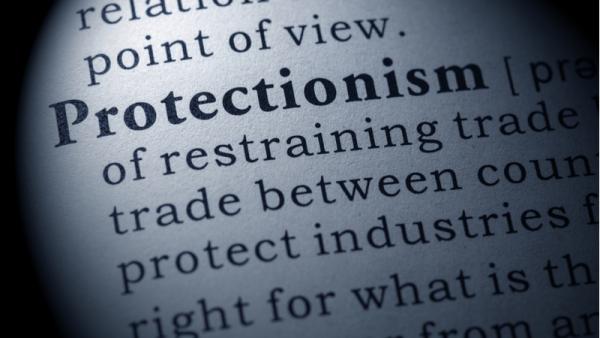
Simone van Nieuwenhuizen, Project and Research Officer, Australia-China Relations Institute, University of Technology Sydney |
This article appeared in The Australian Financial Review on October 22 2018.
There is a rising tide of protectionism worldwide. For Australians its most immediate manifestation is Donald Trump's in-your-face 'America First' approach, which has seen the US withdraw from and rewrite bilateral and multilateral trade agreements, or threaten to do so. It has also seen the imposition of tariffs on $250 billion worth of imports from China, culminating in a looming trade war. Brexit and European populist movements stand as other prominent examples of this trend.
China is another example.
At the World Economic Forum in Davos in January 2017, shortly before Trump took office, Chinese President Xi Jinping touted the benefits of 'economic globalisation' and stated, 'China will keep its door wide open and not close it'. He said, 'An open door allows both other countries to access the Chinese market and China itself to integrate with the world'. Xi claimed China would 'enable the market to play a decisive role in resources allocation'.
At the time, some applauded his speech, and considered it evidence that China would be taking the mantle of global trade leadership; that it represented an antidote to Trump's disdain for free trade and open markets.
The reality, of course, is much more complicated.
This year marks the 40th anniversary of the beginning of 'reform and opening up' in China. Introduced in 1978 – just two years after Mao's death and the end of the Cultural Revolution – it enabled participation of private enterprise. The policy ultimately led to China's emergence as an economic powerhouse, which in 2011 became the world's second largest economy. This was an achievement previously unimaginable for a purportedly socialist country.
Since reform and opening up, the Chinese government has proclaimed its commitment to openness and fairness, while continuing to implement protectionist policies. Under Xi, China is becoming less, not more, open – both economically and politically. But now, in contrast to Xi's speech at Davos, less is being said to mask this.
The image and narrative of reform are changing.
Rewriting history
On previous anniversaries of the policy, Deng Xiaoping, who was instrumental to the policy, had been depicted at the forefront. This year, official coverage muted Deng's contribution. The National Museum of Art's special exhibition effectively rewrote history by portraying President Xi and his father, Xi Zhongxun as great contributors to the process of economic reform and liberalisation, with Deng playing a secondary role.
Recently, in language reminiscent of the Mao era, President Xi has reinvigorated calls for 'self-reliance', claiming that 'unilateralism' – presumably a reference to US tariffs – 'has forced China' to follow this path. But, he added, 'This is not a bad thing'. Xi has publicly cautioned against criticism of state-owned enterprises (SOEs), and stated that SOEs should 'become stronger, better, and larger'.
This represents part of a broader debate on the role of private enterprise in China's economy. Several commentators and Communist Party officials have supported the view that 'China's private sector has already done its job in aiding the development of the state economy, and it should now leave the stage'.
It's little wonder the private sector feels squeezed out.
When it comes to foreign investment, China is among most restrictive economies according to the OECD's FDI Regulatory Restrictiveness Index. In a US-China Business Council survey released last month, US companies operating in China continue to cite preferential treatment for domestic companies among their top concerns.
The 'Made in China 2025' policy, introduced in 2015 by the Chinese government as part of an effort to increase the country's international competitiveness in cutting-edge technology, has raised some pertinent questions. Many foreign companies and governments suspect the policy is not simply intended to make China more competitive and innovative in industries such as information technology, robotics and aeronautics, but to monopolise global supply chains in these areas through unfair means.
Some companies surveyed for a 2018 report by the EU Chamber of Commerce in China said they saw opportunities in the policy. However, 43 percent had seen increased discrimination under the initiative. Forty-eight percent claimed it was more difficult to do business in China in 2017 than 2016.
Just last week, fresh concerns were raised when the Ministry of Public Security announced a new cybersecurity regulation enabling authorities to inspect internet providers and businesses and copy information they decide, in broad terms, 'may endanger national security, public safety and social order'. This came one day after Bloomberg released a report claiming that China's People's Liberation Army (PLA) had in 2015 planted tiny microchips in motherboards of servers used by dozens of US companies, including Apple and Amazon, and several government agencies. If true, this would give the PLA access to corporate secrets and sensitive, perhaps even classified, government data.
The door does not look 'wide open' as Xi claimed at Davos; it is in fact slowly closing. While this process began before President Trump entered the scene, the push of a US-China trade war could end up slamming it closed.
Author
Simone van Nieuwenhuizen is a researcher at the Australia-China Relations Institute, University of Technology Sydney.


